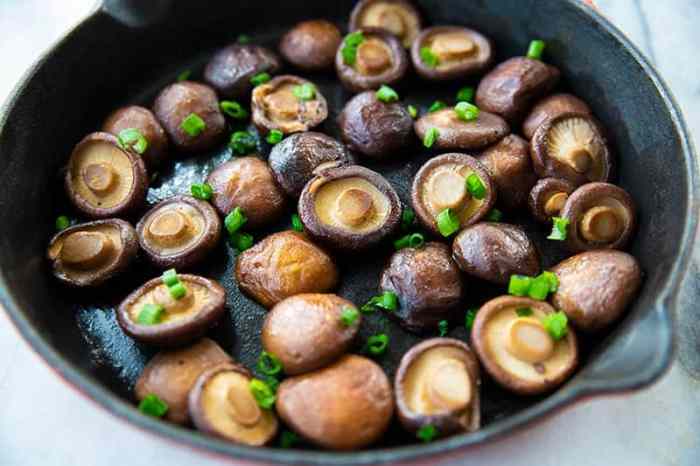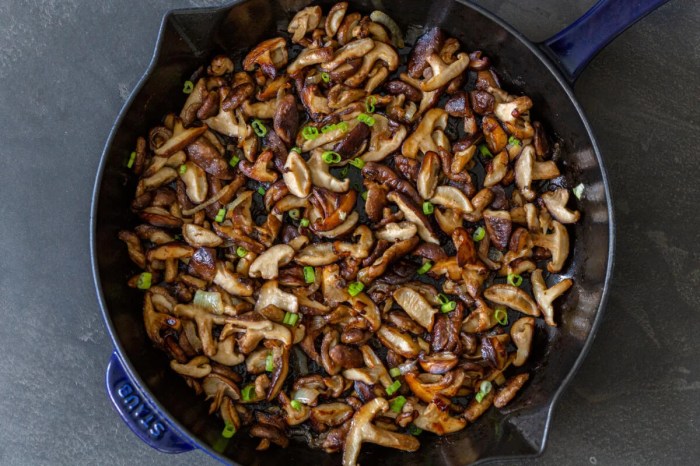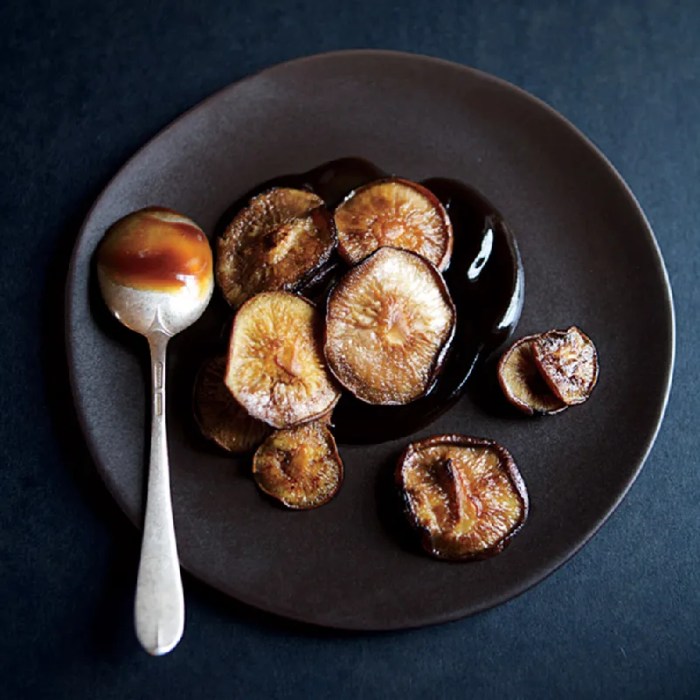Are you looking to add a touch of Japanese flair to your cooking? Look no further than shiitake mushrooms, a versatile and flavorful ingredient that can elevate any dish. With their rich umami flavor and meaty texture, shiitake mushrooms are a favorite in Japanese cuisine. In this comprehensive guide, we will show you how to cook shiitake mushrooms Japanese style and share tips and tricks to help you get the most out of this delicious ingredient.
Choosing the Right Shiitake Mushrooms: How To Cook Shiitake Mushrooms Japanese Style
When cooking Japanese dishes, it’s important to select high-quality shiitake mushrooms. Look for mushrooms that are firm, with a smooth cap and a rich, earthy aroma. Avoid mushrooms that are slimy or have dark spots, as these may indicate that the mushrooms are past their prime.
Preparing Shiitake Mushrooms
Before you start cooking, it’s essential to prepare the shiitake mushrooms properly. Begin by wiping the mushrooms clean with a damp paper towel to remove any dirt or debris. Next, remove the stems from the mushrooms and slice the caps into thin strips or dice them, depending on your recipe.
When it comes to cooking crabs Maryland style, it is essential to follow the traditional recipe for an authentic taste. To learn how to cook crabs Maryland style, you can visit this informative guide: how to cook crabs Maryland style.
Cooking Shiitake Mushrooms
When cooking shiitake mushrooms Japanese style, it’s crucial to use the right cooking techniques to bring out their unique flavor. One popular method is to sauté the mushrooms in a hot pan with a bit of oil until they are golden brown and crispy on the edges. You can also add soy sauce, mirin, and sake for an extra burst of umami flavor.
Japanese Shiitake Mushroom Recipes
There are countless ways to incorporate shiitake mushrooms into Japanese dishes. From classic miso soup to savory stir-fries and noodle dishes, the possibilities are endless. Be sure to experiment with different flavor combinations and cooking methods to find your favorite way to enjoy shiitake mushrooms.
Tips for Cooking Shiitake Mushrooms Japanese Style

- Use high-quality shiitake mushrooms for the best flavor.
- Don’t wash the mushrooms, as they can absorb too much water and become soggy.
- Experiment with different seasonings and cooking methods to find your perfect recipe.
- Add shiitake mushrooms to soups, stews, and stir-fries for an extra boost of flavor.
Conclusion

In conclusion, cooking shiitake mushrooms Japanese style is a delicious and rewarding experience. By following these tips and techniques, you can create mouthwatering dishes that showcase the unique flavor of this versatile ingredient. Whether you’re a seasoned chef or a beginner in the kitchen, shiitake mushrooms are sure to become a staple in your cooking repertoire.
FAQs
1. Can I use dried shiitake mushrooms instead of fresh?
Yes, dried shiitake mushrooms can be rehydrated and used in place of fresh mushrooms in many recipes. Just be sure to soak them in hot water until they are soft before using.
When it comes to cooking crabs Maryland style, it’s all about the perfect blend of spices and the right cooking technique. If you want to learn how to cook crabs Maryland style, check out this helpful guide on how to cook crabs Maryland style. From steaming to seasoning, you’ll master the art of creating this classic dish in no time.
2. Are shiitake mushrooms healthy?
Shiitake mushrooms are packed with nutrients like vitamins, minerals, and antioxidants, making them a healthy addition to any diet.
3. How long do shiitake mushrooms last in the fridge?
Fresh shiitake mushrooms can last up to a week in the fridge when stored in a paper bag or a damp paper towel in a breathable container.
4. Can I freeze cooked shiitake mushrooms?
Yes, you can freeze cooked shiitake mushrooms for up to three months. Just be sure to store them in an airtight container to prevent freezer burn.
5. What dishes pair well with shiitake mushrooms?, How to cook shiitake mushrooms japanese style

Shiitake mushrooms complement a wide range of dishes, including stir-fries, soups, risottos, and pasta dishes. Experiment with different recipes to find your favorite flavor combinations.



